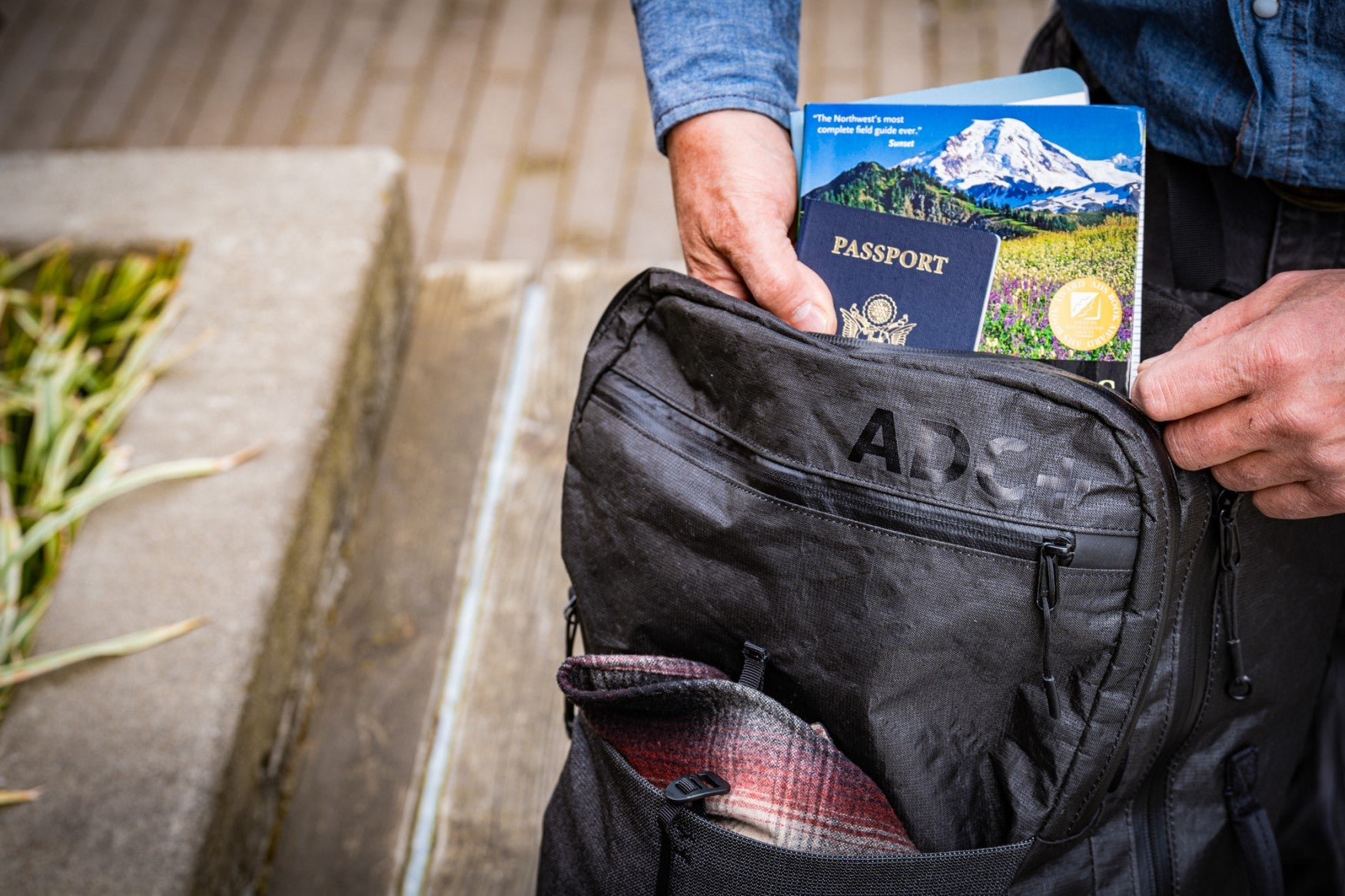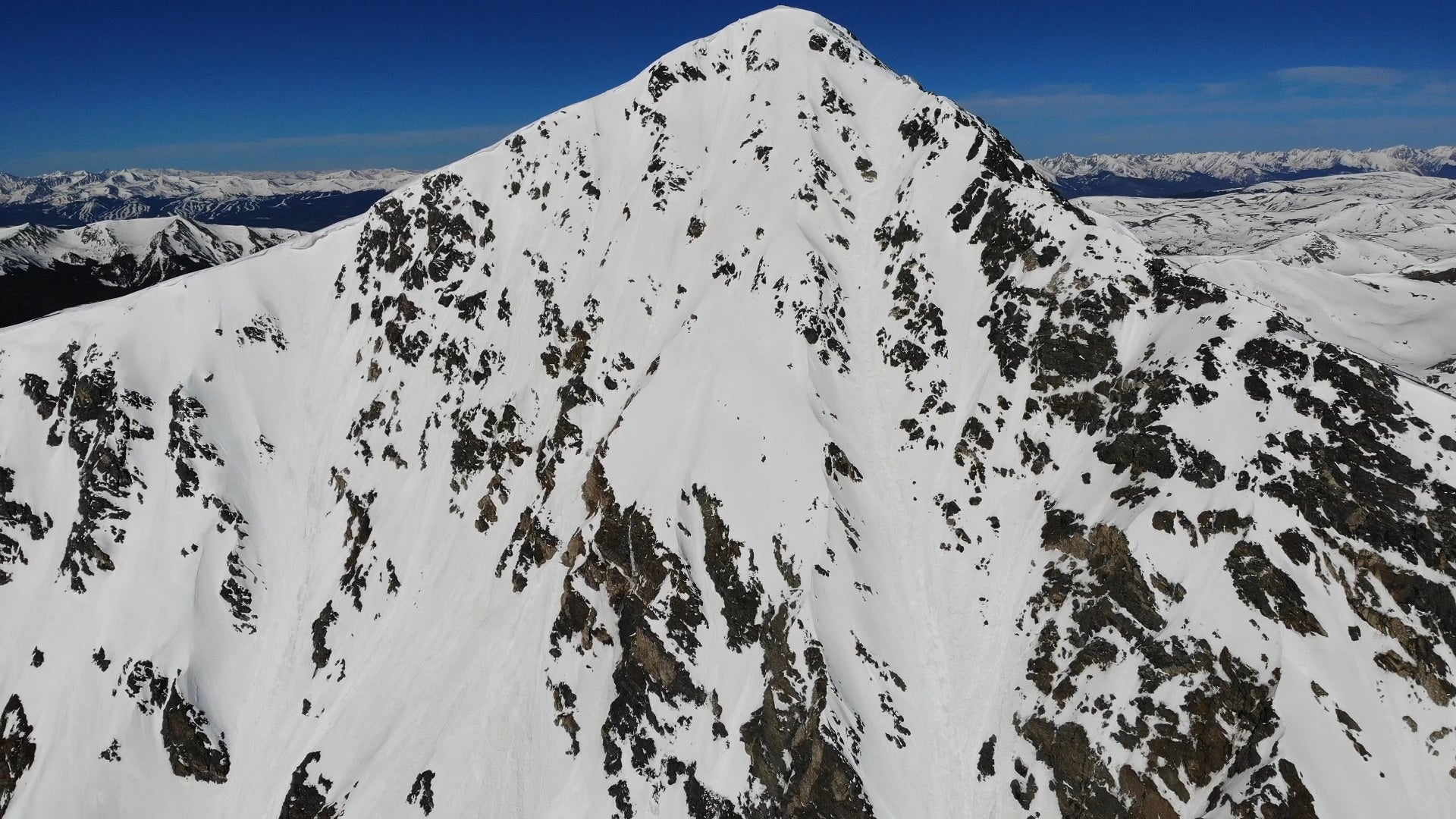What should you pack for a day hike? Should my packing list be different during various seasons? How about for a 14er hike? I get asked these questions all the time. Whether you are heading to hike around your local State Park or a demanding summit, it’s important to have a bag full of the necessary items and gear. Over thousands of miles of day hiking, I have refined my bag and thought I would share with you all. Below is a list of gear that I recommend for a typical day hike.

Backpack: Although this is obvious, it’s key to have a backpack that suits your needs. I would recommend something in the 20L-30L range and having a dedicated spot for a water bottle or water bladder is a nice bonus. Do you think you will be running or just hiking? Standard straps or vest harness? All of these things are important to consider when shopping for a backpack. Six Moon Designs has two great options to choose from in the Daypack size, the Wy’east and Flight 30 if you think you will be running more than hiking.
Clothing: When deciding what to pack for a day hike, clothing is without a doubt the most important part. You want to avoid cotton like COVID-19, so be sure to wear as many synthetic layers as possible. “Cotton kills” is a common expression with outdoorsmen because once it gets wet, it typically has a very hard time drying on its own, which can turn deadly in the mountains. Leave your jeans at home.
- Under Armor/spandex
- Non cotton socks
- T-Shirt
- Pants or Shorts
- Long sleeve shirt or light fleece
- Rain/Light Jacket
- Packable Puffy Jacket
- Hat & Gloves – Yes, even in summer hiking conditions, I always keep both in my bag, just in case. You can pack a light version of both to save weight and space.

Food & Water
These two are so obvious, but you would be surprised how many hikers forget an adequate amount of both when packing for a day hike. I can’t tell you how many people I see carrying one water bottle and that is the extent of their day hike kit. This is absurd and not a sustainable way to stay safe in the outdoors. Everyone is different, but I would recommend at least a Nalgene (32 ounces) of water for an average day trip.
For food, nutrition is important, but so is the mental joy what you pack brings you. My go to is Sour Patch Kids and some kind of salty snack. Is the nutrition level of either of these things high? Not really. But when I am hours into a tough hike, the mental joy a Sour Patch Kid brings me far outweighs any lack of nutrition it is providing me. When packing for a day hike, consider foods higher in sodium since you will typically lose a lot of salt through sweating.
For both food and water, it’s important to pack on the more liberal side as you never know when a day will run longer than you expected.

Navigation
Getting lost is no fun and can happen even on an average hike depending on your environment. Having the proper navigational tools can be the difference between life and death. There are countless stories of hikers getting lost, taking the incorrect route and suffering very serious consequences. You don’t want to be another negative statistic so pack one or more of these items in your bag but more importantly, know how to use all of them.
- Smart Watch with GPS/Compass preferably breadcrumbs or retrace your steps option.
- Garmin inReach or Other Satellite Communication Device
- Paper map or map picture on your phone
- Compass
First Aid Kit
A first aid kit doesn’t need to be a heavy/big one you purchase at a store. It’s easy to make one yourself, pack it in a ziplock bag and call it a day. Have basic items like ibuprofen for those high elevation headaches, antacid, gauze, medical tape, bandaids, hand sanitizer, water purifiers etc. I recently had to use mine on a hike up Boundary Peak in Nevada and it saved me from a very uncomfortable hike down.

Light Source(s)
As you get more experienced with hiking, chances are your “days” are going to bleed into early morning or late evening hours. Starting before the sun rises and hiking after the sun sets requires the proper lighting to make this safely happen. I always have the following in my bag for lighting the way:
- Head lamp – this is the one I use
- Flashlight
- Phone (worst case/light source back-up)
Sun Protection
The number of times the sun has kicked my ass over the years is quite frankly embarrassing. I live in Colorado where the sun is very strong and I am often hiking above 12,000ft. I don’t care how “dark your skin is,” when you are at 14,000ft the sun will burn you very quickly without the proper protection. Not to mention, you only have one set of eyes so be sure to protect them from those strong UV rays.
- Sunglasses
- Sunscreen
- Hat
- Optional: UV Buff
- Optional: Six Moon Designs Shadow Umbrella
Emergency Items
I do a lot of solo hiking and know that if something goes bad, I need to be able to take care of myself. Whether you are hiking with a friend or by yourself, I strongly feel that you should be able to handle a bad situation without the aid of others if things go poorly. Of course having help would be great, but to rely solely on others to protect you in a negative situation is extremely irresponsible in my opinion. These items help me stay prepared for when things do not go my way.
- Some kind of knife
- Lighter/Matches (fire starter)
- Cordage (has many uses)
- Bivvy – This can be a lightweight disposable one or simply an emergency blanket
- Whistle/Mirror – some sort of way to flag down help if things go really south

Day Hike Optional Gear
The term “day hike” covers so many areas and sometimes your environment can dictate what else you are packing for a day trip. The more you hike, you will discover certain items that may be helpful for your personal style, the time of year or to help make your hike more enjoyable. Here are some of the items that I recommend.
- Hiking Poles – very helpful for loose/steep descents, your knees will thank me later
- Headphones – NO ONE, I repeat, NO ONE wants to hear your music on the trail.
- Helmet – Only necessary for higher class hikes or routes with lots of loose rocks
- Toilet Paper/Wagbag – Duh…
- Camera Gear: Camera, Lens and GoPro I use.
- Waterproof stuff sacks – Great way to protect your electronics if rain comes
- Water Filter - When you don't pack enough water or want to save weight, this is a life saver.
- Bug Spray, Bug Net – If you live in a buggy area, you know.
- Packing Pods - great for organizing your gear
- Pack Liner or Pack Cover - when it rains, you keep everything dry.
- Gaiters (seasonal)
- Microspikes (seasonal)
- Snowshoes (seasonal)
- Mountain Ax (seasonal)

Now that you know what to pack for a day hike, you are almost ready to hit the trail. Before heading out to hike, be sure to do proper research about the trail you plan on attempting and the weather for that day. Most importantly, with any of the gear in your bag, be sure to know how to use it! Did I miss an item you always have in your bag? Leave a comment below!











Leave a comment
This site is protected by hCaptcha and the hCaptcha Privacy Policy and Terms of Service apply.